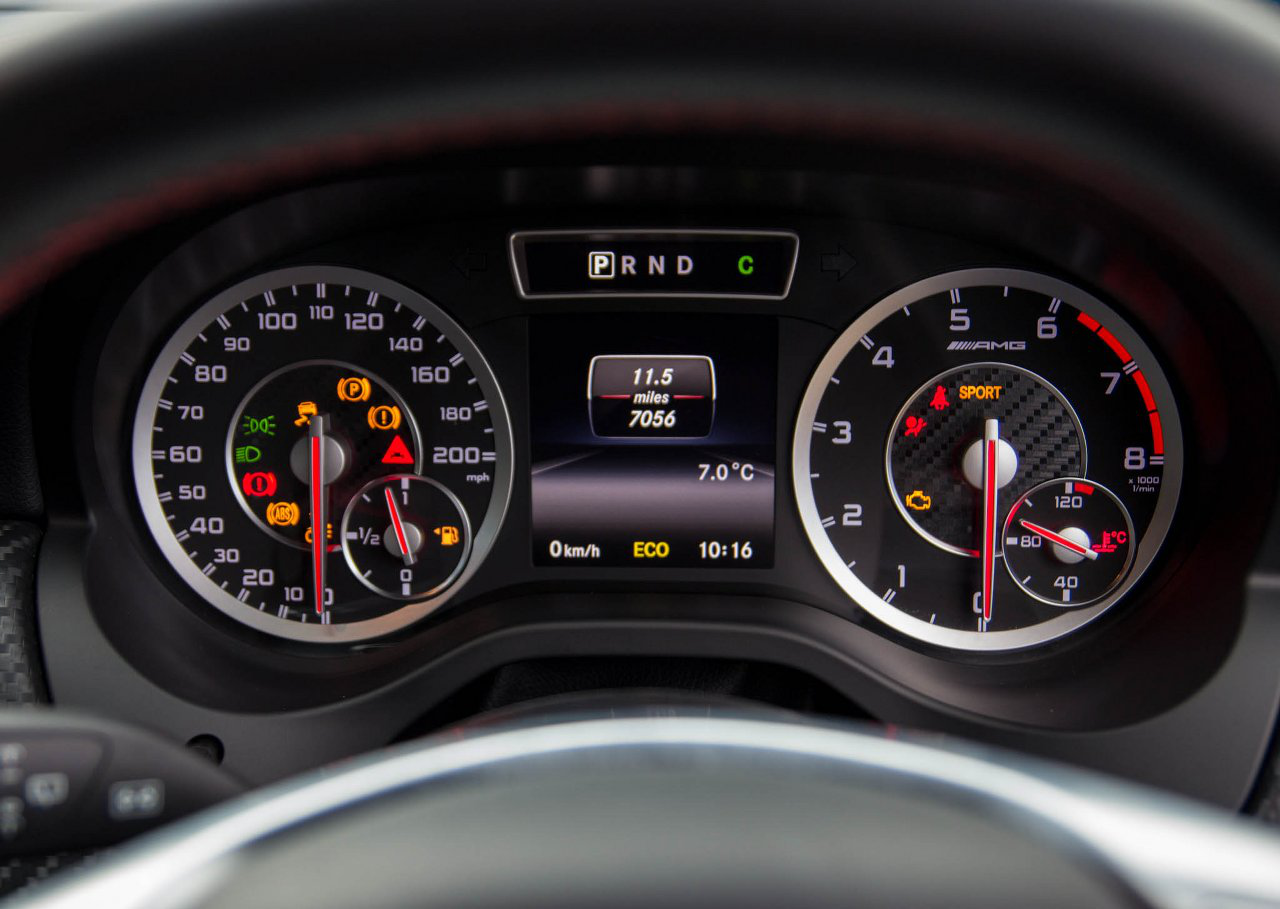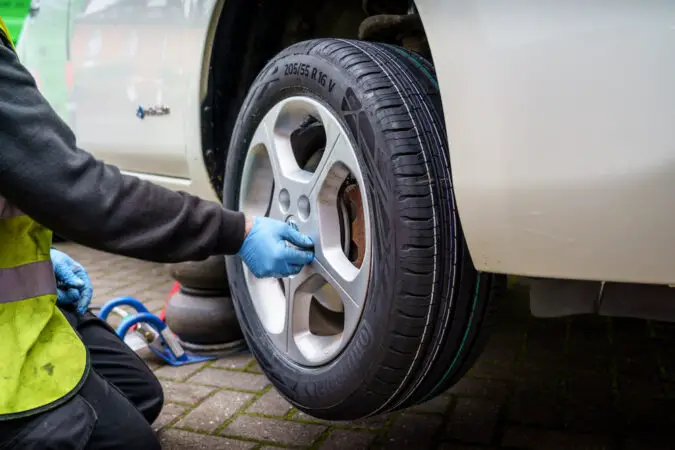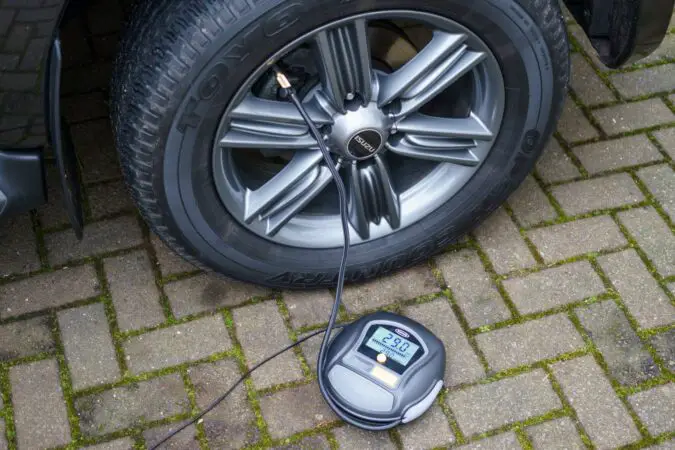It is normal to see your car dashboard signs on and off when you start the ignition every morning. That happens because the car computer checks every sensor and sign light to ensure they are in good working condition. Some car users don’t even understand the meaning of each sign, such as the tire sign in car, and tend to ignore them while driving.
These signs are vital in informing you of the overall health and condition of each essential component in your car. The tire sign in car is a warning light that comes on when your tire pressures might be too low or too high.
It’s normal to be used to all the warning lights on the dashboard flashing when you turn on the car. But one or more of those warning signs being on after a few moments of starting the car can cause headaches and anxiety among safety-conscious drivers. While some warning lights indicate a mandatory trip to the mechanic, others can be solved using DIY tricks.
The tire sign in cars is a warning light that has the appearance of an incomplete tire with an exclamation sign in the center. This sign responds to the tire pressure monitoring system (TPMS). This article will expose all you need to know about this sensor system and how to tackle the tire sign in a car coming on constantly.
- The PSI Metric System
- Why Monitor Tire Pressure?
- Tire Sign In Car
- How To Reset TPMS?
- Warning Signs To Never Ignore
- Last Words
- FAQs
Tire Pressure Monitoring System
As you already know, every car has a built-in sensor for every major component that detects faults in various components and ensures they are in perfect working condition.
The tire pressure monitoring system (TPMS) is a sensor system responsible for monitoring your car’s tire pressure and alerts the driver when the tire pressure gets above or below the specified pressure range. This pressure system is connected to the tire sign in car dashboards that illuminate anytime a lapse is detected.
The tire pressure sign comes on when the present tire pressure is 25% below the required pressure. When this happens, the first step you should take as a safety-conscious driver is to park immediately and check each tire’s pressure using a simple tool that costs about 2 dollars in most auto parts stores.
When you find the tire that is going flat, you can either pump more air into it. Car manufacturers use basically two different variants of this Tire Pressure Monitoring System (TPMS). One variant is the direct tire pressure monitoring system, while its counterpart is the indirect tire pressure monitoring system.
Direct Tire Pressure Monitoring System
This variant uses sensors attached to individual tires to monitor and report the pressure conditions of each tire. The resulting data is then sent to a receiver via radio transmission to the dashboard.
Some more sophisticated forms of this variant can detect tire pressure with its temperature. While most manufacturers feature this variant inside each tire, others use external sensors outside the tire to detect and report tire pressure conditions.
Each of these Direct TPMS in your tires comes with a built-in battery that lasts about 10 years! The battery is non-replaceable, and the whole sensor will have to be replaced if it runs down.
Replacing the entire sensor might cost a bit more because the new sensor will have to be reprogrammed into the car computer. Since these sensors are located mostly at the tire valves, their location makes easy wear and tear inevitable. They can be damaged during tire maintenance routines or bumpy rides on rough terrain.
Indirect Tire Pressure Monitoring System
As this name implies, the Indirect TPMS is not located inside the tires. This variant rather uses sensors mounted on the anti-lock brakes. The sensors detect the rotation speed of each tire and use the data to determine when a tire needs to be inflated or deflated.
That is made possible because tires of different sizes rotate at different speeds when power is applied. Smaller tires generally rotate faster than larger tires because of the difference in circumference. This will be crucial for a better understanding of tire inflation pressures.
The resulting data is sent to the engine control module (ECM). The engine control module analyzes this data based on the rotation speeds of each tire to determine which tire is under-inflated. This information is then used to determine when the tire sign in the car comes on.
While this sensor variant has lesser issues than the Direct TPMS, more attention is needed to manually reset the sensor system every time you inflate your tires. When it is not properly reset after inflating one or two tires, the system now reads the newly inflated tires as bigger than the other tires, and the warning light stays on.
PSI Metric System
Tire pressures are usually measured in pounds per square inch (PSI). All vehicles have a recommended PSI required for the optimal working condition of the tires and vehicle handling.
This recommended PSI value is mostly found in the owner’s manual. You can also find this figure written on the driver’s door. Passenger cars and light trucks typically have a PSI range of 27-35. Heavy-duty trucks or muscle cars do, however, have slightly higher PSI recommendations.
For the best vehicle handling results, drivers should use the recommended PSI value. Anything higher or lower than the recommended PSI value comes with significant risks. Drivers are advised to ignore the PSI value written on the body of the tires. This is what does it mean by low tire pressure.
That value signifies the highest possible pressure that the tire can handle. DO NOT use this value as a guideline to avoid damaging the tire and endangering yourself or other road users.
Checking Tire Pressure
When the car tire sign comes up, we recommend you park your car as soon as possible and check each tire pressure following the below steps.
- Using tire pressure gauges, proceed to check the pressure in each tire. It costs approximately 2 dollars to purchase one from any convenience store nearby.
- After checking the tire pressures, compare the figures with the data in your owner’s manual.
- Inflate or deflate each tire as recommended.
- Drive the car for a few minutes for the TPMS sensor to turn off or reset.
Suppose the light doesn’t automatically go off after following the procedures mentioned earlier. In that case, it can indicate that the sensor has a hard time resetting or that your TPMS might be bad and need to be replaced. This is what happens if you have a tire pressure sensor fault or require a tire pressure sensor replacement or a tire sensor replacement.
Why Monitor Your Tire Pressure
Below are some reasons you need to take adequate care of your tire pressure.
1. Better Fuel Economy
Maintaining your tires at the recommended PSI helps you save money on gas. That is a huge relief, especially with the increasing cost of gas in most countries. Research has shown that driving with tires that are properly inflated saves about 3% of fuel. Rolling resistance is reduced, and less fuel is used to cover the same distance.
This metric might seem insignificant initially, but when accumulated over time and converted to money, you will realize how many bucks you saved by carefully heeding the car tire sign (TPMS warning light) and monitoring your tire pressure.
2. Prevent Wear And Tear On The Tires
Tires are made up of coils of thread that wind up. Friction while driving puts stress and wear and tear on these threads. When you drive with tires that aren’t inflated enough, they make more contact with the floor, which causes more friction. Increased friction further leads to increased damage done to tire threads.
These can vary from seeing the outside of your tires wearing. Or, noticing what causes tire wear on the inside. The latter is otherwise referred to as either inner tire wear, or inside tire wear. Hence, carefully monitoring your tire pressures will save you the cost of replacing damaged tires.
3. Tires Last Longer
As previously stated, driving with under-inflated tires will lead to more friction. This friction generates more heat, which damages your tires. Premature tire damage or tire blowout is one of the numerous disadvantages of driving on under-inflated tires. Your tires tend to last longer with proper tire inflation techniques.
Tire Pressure Light
Apart from low air pressures in tires, your tire sign in car can come on because of other factors. They include:
Tire Sign In Car, Why Is it On #1: Change In Position Of Tire
Your TPMS light may come on when you swap tire positions. Most times, simply taking the car for a cruise will rectify the problem. But if the light stays on for more than a few minutes, you should take your car to a mechanic for a full recalibration.
This is the case when the sensors have trouble going back to their original settings after the swap.
Tire Sign In Car, Why Is it On #2: Damaged TPMS Sensors
Direct TPMS sensors are susceptible to wear and tear over time due to their position in car tires. During bumpy rides, they tend to become damaged and may not function appropriately. The TPMS light will come on when one or more sensors are damaged.
Replacing a normal TPMS sensor can cost about 40 to 70 dollars. Some exotic cars have TPMS sensors (aka the tire pressure ‘TP’ sensor) that cost hundreds of dollars but carry the same function.
Tire Sign In Car, Why Is it On #3: Low Battery In One Or More Sensors
Typical TPMS sensors are predicted to last about 5 to 10 years. They come with an inbuilt irreplaceable battery, and once the battery is dead, the whole sensor will have to be replaced.
Tire Sign In Car, Why Is it On #4: Temperature Changes
According to Woody Rogers, “for every + or – change of 10 degrees F, tire pressures change by + or – 1 pound per sq inch“. That means that tire pressures change with atmospheric temperature. Higher atmospheric temperatures result in higher tire pressure.
In climates with colder mornings and hotter afternoons, check your tire pressure every morning to get an accurate reading in PSI. Checking tire pressures in the hot afternoon after driving the car leads to a reading higher than the actual authentic result. That is due to heat and the expansion of gases.
You can get the recommended cold PSI from your owner’s manual and keep to the early morning reading regardless of the result you get in the afternoon.
Driving With Low Tire Pressure
The tire pressure monitoring system (TPMS) is a very important safety tool that is often ignored by careless drivers who are yet to realize the problems associated with driving on under-inflated tires. The NHTSA has stated that utilizing the TPMS sensor light in making decisions will reduce the risk of driving with dangerous tires by 50 percent!
A 50 percent danger reduction metric is one to beware of. This safety tool (TPMS) is only functional when drivers learn to utilize it. Another study made amongst car users found that only 42% of drivers could recognize the tire sign in car on their dashboards.
Out of this mere 42%, only about 21 percent take appropriate actions when this light comes on. That is alarming in all ramifications hence the need to re-orientate drivers on the consequences of driving while this TPMS light is lit.
Tire Sign In Car, Consequences #1: Tire Failure
Ever heard of an accident that occurred when the tire suddenly blew out? This particular incident has taken a lot of lives and destroyed much property. A tire failure happens when the vehicle is at high speed and makes the driver lose complete control of the vehicle.
Sometimes this occurrence is caused by a driver ignoring the TPMS warning light for a long time. Most people don’t also know that as little as a 5 PSI short of the recommended pressure can cause tire failure.
Tire Sign In Car, Consequences #2: Rough Handling
As you may already know, driving with under-inflated tires causes bad handling. With uneven handling in place, the possibility of getting into an accident increases, and this is not the prayer of any driver. Avoiding this can be as simple as obeying the car tire sign light and fixing your car tires.
Under-inflated tires also take more time to stop. Imagine trying to brake in an emergency, and because of under-inflated tires, your car takes a long time to stop. Hitting another car or property is one of the worst-case scenarios.
Tire Sign In Car, Consequences #3: Inefficient Fuel Economy
Your car tires must be properly inflated to get the minimum rolling resistance possible. The smaller the rolling resistance of your car, the more efficient your car is in economizing fuel. Under-inflated tires will have more drag because of increased surface area contact.
When your tires are properly inflated to the recommended PSI, the rolling resistance will be at a minimum; hence, the engine expends less fuel to travel the same distance. The opposite becomes the case when driving with under-inflated tires.
Tire Sign In Car, Consequences #4: More Heat Is Generated
When you drive on underinflated tires, there is more friction between the tire and the road, which heats up the tires. When the tires become overheated, a lot of problems come into view. Your transmission and brakes could be affected, which will incur heavy costs.
Taking care of your tires when the car tire sign comes on can be a good way of saving money on damage repairs.
So to answer the question: ‘Is it safe to drive with the TPMS light on?” We will confidently say it’s not SAFE.
Tire Pressure Light Blinking
A steady TPMS light indicates that one or more car tires need inflation. The light illuminates and stays on until the affected tire is inflated to the appropriate PSI. After driving for a few miles after inflation, it automatically goes off on most cars.
A flashing TPMS light shows a fault within the TPMS system. One or more sensors might be damaged or have a dead battery. Either of these options means total replacement of the affected TPMS sensor. A flashing TPMS light shows that a sensor isn’t communicating with the dashboard.
TPMS Reset
Drivers have experienced the TPMS light staying on even after carrying out recommended procedures. This issue is mostly caused by the TPMS not resetting itself once the tires are properly inflated. If you have experienced this before, you should follow the below steps to reset your TPMS manually.
- Drive above 50 mph for 10 minutes. Doing this will cause the TPMS sensor to try resetting when you turn the steering.
- With the vehicle OFF, turn on the ignition only. Locate the TPMS button right under your steering, press and hold for a few seconds until the light blinks 3 times. Consult your owner’s manual if you can’t find the TPMS reset button.
- Start the car and allow revving for 20 minutes.
- After 20 minutes of revving, use a hand pump or similar device to inflate all tires, including the spare tire. Make sure to exceed the recommended PSI value by a value of 3.
- Now, gently deflate all inflated tires completely until you get a FLAT.
- Now re-inflate again to recommend PSI value (applies to all tires).
- Put OFF the ignition
- Disconnect the Positive + battery cable
- Turn on the ignition and press the HORN a couple of times to discharge any previous accumulated charges.
- Reconnect the battery and BOOM! Your TPMS should have completely RESET to default.
Car Dashboard Symbols And Meanings
Since many warning lights on the dashboard indicate many things, drivers should pay close attention to them. Ignoring these particular warning signs in your car can cause ghastly accidents and damage its components.
1. Temperature Warning Light
A floating thermometer often indicates this light in red. When this comes up, it means that your engine is overheating! The damages that overheating can cause when ignored are gigantic and can incur heavy repair costs.
The common culprit to engine overheating is a malfunctioning radiator. The radiator circulates the coolant liquid to engine components to prevent overheating during working hours. When one or more components of this cooling system go bad, the engine starts to overheat, and the temperature warning light comes on.
Do Not Open Your Radiator Cap If Your Vehicle Is Overheating. Once your engine overheats, park in a safe zone immediately. Put off the ignition and wait 30 minutes before opening the bonnet. Opening the bonnet and radiator cap immediately may cause burn injuries. After the bonnet is opened, check the coolant level if you notice low coolant symptoms and top up if required.
Sometimes, a faulty car thermostat can be the culprit causing an engine to overheat. So, be wary of the bad thermostat symptoms (like when you notice a P0128 code in your Jeep or PO128 code in general), and you might have to stomach a hefty thermostat replacement cost, too. A visit to the mechanic is mandatory if the vehicle keeps overheating after topping off the coolant.
2. Brake Warning Light
Some brake failures can be averted when drivers pay attention to this warning signal. It comes on when your brake fluid runs low and there is a loss in brake pressure. When this light is observed, park your car immediately and inspect your brakes. Press it down and confirm its effectiveness while driving at low speeds.
Proceed to check your brake fluid level; if it is low (which might point to a brake fluid leak), refill immediately. When you don’t know what to do, park safely and call on the services of a mechanic right away. Taking a taxi home is safer than driving with faulty brakes.
3. Low Oil Pressure Warning Light
This light indicates low oil levels in your engine. Driving with this warning light on can, as well as many others, cause an engine knock. Park your vehicle safely and proceed to check the oil level using the dipstick. In so doing, make sure you also know where should the oil level be on the dipstick.
Tire Sign In Car: In Conclusion…
A tire pressure monitoring system (TPMS) is a sensor system that monitors the condition of your car tires and alerts you when the tire pressure is below or above the recommended PSI value.
This car tire sign is often ignored by drivers who don’t know the negative effects of driving with under-inflated tires. Manufacturers employ two types of TPMS: direct and indirect. Both perform the same function but use different methods.
The TPMS light can come on due to low tire pressure, damaged TPMS sensors, a change in temperature, etc. Rough handling, overheating, bad fuel economy, tire damage, etc. are some of the negative effects of ignoring the TPMS light.
The best time to check the correct tire pressure is in the morning (as you would with the Tesla Model 3 tire pressure). Adequate care should be taken when inflating the tires to the recommended PSI. Overall, the TPMS light, brake warning light, temperature light, and low oil level light are some of the car dashboard signs you should never ignore as a driver.
FAQs On Tire Sign In Car
How To Check Tire Pressure
The best time to check your tire pressure is in the morning using a pressure gauge. Compare your result with the recommended PSI value in the owner’s manual.
What Does TPMS Mean
TPMS means Tire Pressure Monitoring System. They are sensors that help you determine the right time to pump more air into your tires.
How To Fix Low Pressure
Fixing low tire pressure is as simple as inflating the tire with a hand-held pump or similar device.
Where Is TPMS Sensor Located
For direct TPMS, the sensor is located on and attached to the tires. For the indirect TPMS, the sensor is located at the anti-lock brake pads.
Why Is My Tire Pressure Light Blinking
A bad or damaged sensor commonly causes this. or a problem with the TPMS.
Where Is The TPMS Reset Located
It can be right under the steering wheel. Consult your owner’s manual for further clarification.




